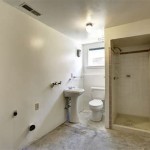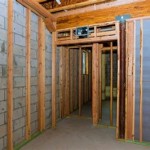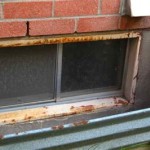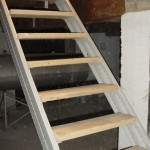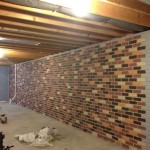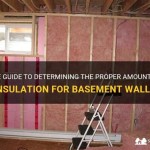How to Insulate Basement Floor Joists
Insulating your basement floor joists is a crucial step in maximizing energy efficiency and creating a more comfortable living space in your home. Properly insulated joists prevent heat loss in the winter and heat gain in the summer, reducing your energy bills and improving indoor air quality. This guide will provide a comprehensive understanding of how to effectively insulate basement floor joists, covering key aspects such as material selection, installation procedures, and safety precautions.
Understanding the Benefits of Basement Floor Joist Insulation
Insulating basement floor joists offers numerous advantages, contributing to a more comfortable and energy-efficient home. Primarily, insulation acts as a barrier against heat transfer, minimizing heat loss during the winter and heat gain during the summer. This translates to lower heating and cooling costs, reducing your energy consumption and environmental footprint. Additionally, insulation helps create a more comfortable living environment by preventing drafts and reducing noise levels from the basement.
Beyond energy savings and comfort, insulating basement floor joists can also enhance the indoor air quality of your home. By preventing moisture from seeping into your living space, insulation reduces the risk of mold and mildew growth, creating a healthier environment for you and your family.
Choosing the Right Insulation Material
The choice of insulation material is crucial for the effectiveness and longevity of your basement floor joist insulation project. Common insulation materials include fiberglass batts, rigid foam boards, and blown-in cellulose.
Fiberglass Batts
Fiberglass batts are a popular choice for basement floor joist insulation due to their affordability and ease of installation. They come in various thicknesses and R-values, allowing you to select the best option based on your climate and desired level of insulation. Fiberglass batts are typically easy to cut to fit the joist bays, and they can be secured using staples or wire.
Rigid Foam Boards
Rigid foam boards offer excellent insulation performance and provide a moisture barrier, making them a suitable choice for basements that are prone to moisture. These boards are typically made of extruded polystyrene (XPS) or expanded polystyrene (EPS) and come in various thicknesses and R-values. Rigid foam boards can be glued or mechanically fastened to the underside of the floor joists.
Blown-in Cellulose
Blown-in cellulose is a loose-fill insulation material made from recycled paper products. It is a highly effective insulator and offers good soundproofing properties. Cellulose is ideal for filling irregular spaces and hard-to-reach areas, making it a suitable option for complex basement floor joist configurations. A specialized blower is used to install blown-in cellulose, which can be a more expensive option than batts or boards.
Installing Basement Floor Joist Insulation
Installing basement floor joist insulation involves specific steps to ensure proper installation and optimal insulation performance. The process typically involves three main steps: preparation, installation, and finishing.
Preparation
Before starting the insulation process, it's essential to prepare the basement floor joists. This includes clearing the space beneath the floor joists, removing any obstructions, and ensuring the joists are clean and dry. It's also advisable to wear appropriate safety gear, including gloves, eye protection, and a respirator if working with fiberglass insulation.
Installation
The installation process will vary depending on the chosen insulation material. For fiberglass batts, carefully measure and cut the batts to fit each joist bay. Secure the batts in place using staples or wire. For rigid foam boards, apply a bead of construction adhesive to the underside of the floor joists and press the boards into place. Mechanically fasten the boards if necessary. When installing blown-in cellulose, use a specialized blower to fill the joist bays with the insulation material. Make sure to fill the entire cavity evenly and avoid leaving any gaps or voids.
Finishing
After installing the insulation, it's important to ensure a proper vapor barrier is in place to prevent moisture from condensing within the insulation cavity. This can be achieved by using a plastic vapor barrier sheet or by ensuring your insulation material is vapor-resistant. Finally, inspect the installation carefully for any gaps or leaks and address them appropriately.
Safety Precautions
Working with insulation materials requires adherence to certain safety precautions to ensure a safe and successful project. These include:
Always wear appropriate safety gear, including gloves, eye protection, and a respirator when handling fiberglass insulation. Ensure adequate ventilation while installing insulation to prevent the buildup of dust and fumes. Avoid using insulation materials in areas that are exposed to direct heat sources or open flames. Store insulation materials in a dry and well-ventilated area. Dispose of insulation materials responsibly, following local regulations.
Insulating basement floor joists is a worthwhile investment in your home's energy efficiency, comfort, and health. Following the steps outlined in this guide, you can effectively insulate your basement floor joists and reap the benefits of a more comfortable and energy-efficient living space.

Basement Rim Joist Insulation For Cold Floors Ecotelligent Homes

Insulating Rim Joists Fine Homebuilding

Insulating Rim Joists Fine Homebuilding

Sealing And Insulating Rim Joists Insofast Continuous Insulation Panels

Insulate Basement Rim Joists Diy Family Handyman

Insulating Basement Walls With Embedded Joists Greenbuildingadvisor

Floor Above Unconditioned Basement Or Vented Crawlspace Building America Solution Center

How To Insulate Your Rim Joists And Stud Wall Cavities Dap Global

Preparing For Foundation Or Floor Insulation

Sealing And Insulating Rim Joists
Related Posts

